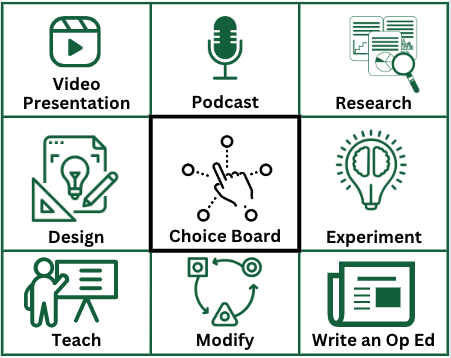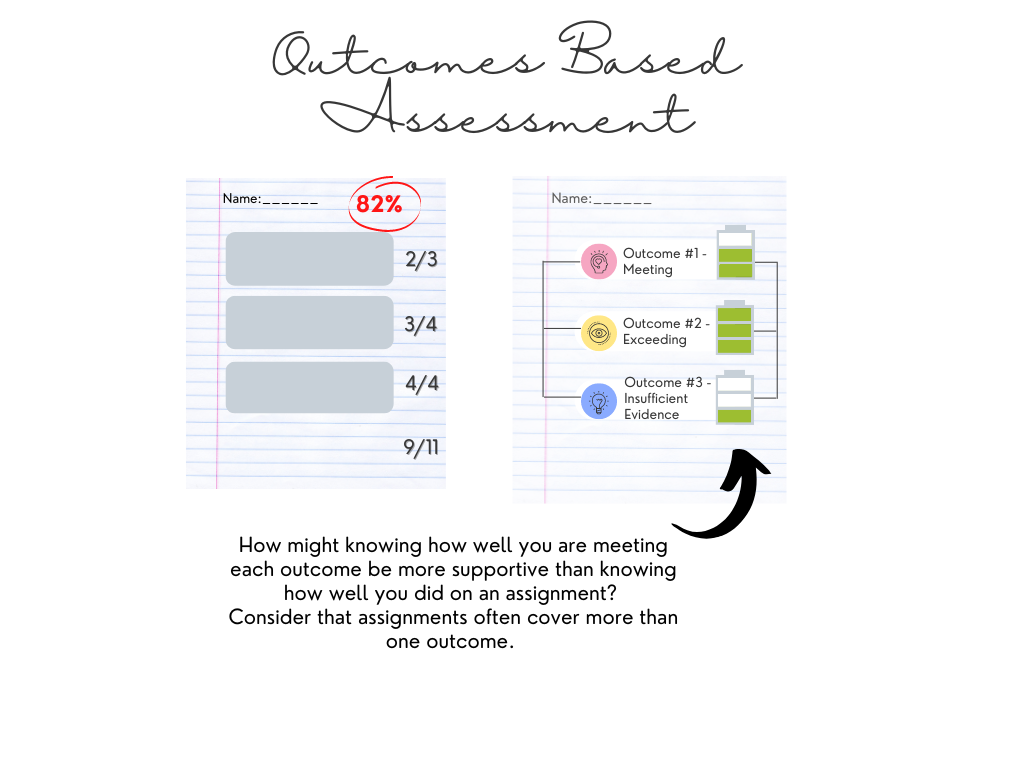USask Assessment Principles
In the 2022-23, USask adopted an updated set of principles about how we try to assess students. Here are some tips about using each of the principles in your course. Each principle is defined and related posts are listed.
Is aligned with learning outcomes and instructional strategies (assessment of learning). Alignment refers to the process of planning your learning outcomes to describe what your students will be able to do, know or value, and then planning how you will assess and teach based on those outcomes. When align to outcomes, you only gather evidence of academic achievement that is critical to those outcomes.
- Watch this video what “aligned” means
- Understand the spectrum of grading practices related to outcomes
- Learn the difference between weighting by outcomes and assignments
- Read about problems with assessing attendance and participation
Is inclusive and transparent, so students have equitable opportunities to demonstrate their learning. When assessment is inclusive and transparent, students understand what they are trying to demonstrate through an assessment and what specific characteristics a good assessment product has. When we make assessments more inclusive, they are designed to work for well for a variety of access needs and cultures, often through choice or universal design.
- Watch this video on how to make assessment transparent using a rubric
- Read an open educational resource about inclusivity through universal design
- Make your Canvas exams more accessible
- Read more about how to design intercultural curricula through internationalization
- Learn how to design inclusive assessments to provide multiple opportunities to learn
Gives students multiple opportunities to learn through practice and feedback, so they have sufficient time and support to reflect and improve (assessment for learning). When assessment is designed to grow students learning, students get early, often ungraded, feedback on their practice. They learn how to do well, and then do an assessment designed to grade their completed learning. Timely feedback and reflection are designed into the course.
- Get the basics of using Poll Everywhere for practice and feedback, even in large courses
- Learn about how to give efficient feedback
- How to make room in your course for practice
- How to use oral assessments to reflect and improve on learning
Develops student’s ability to learn effectively and prepares students to be self-directed, reflective, and engaged learners (assessment as learning). The assessments that make the biggest long term impact on student learning require them to engage with complex issues and problems, make choices about how to proceed and reflect on how they did.
- Learn about grading reflection
- Consider how offering choice in assessment impacts student ownership of learning
Is designed so students apply disciplinary learning under authentic, or as close to authentic as possible, circumstances. Our disciplines play important roles in the fabric of our society. Well-designed assessments help students to think like members of our disciplines and professions, and use the types of skills they will use when they graduate.
- Read what authentic assessment means
- Learn about non-disposable assignments
Is designed and sequenced to optimize students’ success. A key goal of the assessment process to help as many students as possible learn your course outcomes. To that end, it is important to only assess skills and content you have spent substantial time teaching, and to assess chunks or steps of hard concepts to help students break hard learning into parts.
- Learn planning process for sequencing learning and assessment on a specific outcomes
- Learn about using scaffolding to design assessments, including sequencing, chunking, and the importance of students receiving feedback along the way.
Assessment Principles beyond one course
Discussions about effective assessment practice impact you when you plan your course, but they are also a part of discussions in your department, college or school. In addition to the initials 6 principles mentioned above, there are 4 more (principles 7-10) that focus on the types of assessment decisions made as a group of faculty and academic leaders. Effective assessment is embedded in departments, colleges/schools, and system-wide when it:
- Provides a valid and trustworthy representation of student achievement that students, educators, disciplines, accrediting bodies, and employers can have confidence in.
- Is manageable and sustainable for educators, and appropriately facilitated by policy and resourcing.
- Provides useful information for ongoing course and program enhancement.
- Forms an integral part of program design, aligning with what programs of study are aiming to achieve within disciplinary communities.



